18 October, 2002
Research Visit Part II
The second major part of my research trip has brought me to the Johnson Space
Center (JSC) in Houston, TX. This part started with a dinner where I was
able to meet several members of my research team including Dr. Carlton Allen,
the curator of meteorites at JSC, Dr. Dean Eppler who designs and tests
spacesuits and materials for NASA, and Dr. Catherine "Cady" Coleman, an
astronaut who has been on two previous shuttle missions. Others attending
the dinner were Jaclyn Allen, Carl's wife who works for the education
division of NASA, and Andrew Chaikin, an author of several books about the
space program. It was great to meet and talk with such an exciting diverse
group of people.
The first thing I got to see at JSC was the lab where the meteorites are
stored. When meteorites are found in Antarctica, they are bagged and shipped
frozen to California. From there, they are sent to the Johnson Space Center
where they are stored, cold, and in a nitrogen environment to prevent
oxidation. The Johnson Space Center crew doesn't completely classify the
meteorites, but can visually sort them into some basic categories. From
here, they are bagged and identified in separate chambers and a fragment is
sent to the Smithsonian.
Lots of science dealing with meteorites and astromaterials is conducted at
the JSC. One woman was studying magnetite crystals in ALH84001 while another
gentleman studies impact features produced at different temperatures and
pressures with rocks. He fires a variety of projectiles at rocks to see how
they react to impacts. This mimics the conditions found primarily on the
Moon and Mars where there are numerous impacts from micro and small
meteorites. They do not have the thick atmospheric blanket that Earth does
to prevent or slow such collisions. This research will be valuable if people
are ever sent to Mars.
One of the highlights of my visit was my chance to sit with Cady at the
CapCom (Capsule Communications) desk at Mission Control. I got to witness
firsthand what takes place during a shuttle mission. I was struck when Cady
pointed out the diversity of people working in Mission Control in terms of
age, gender, and race. It looks very different today than it did during the
Apollo era. The technology was advanced, but I had to laugh when I saw the
Weather Channel on one of the monitors and that some of the computers ran
Windows 2000 operating system. It just shows that the best technology is
available to anyone, not just rocket scientists.
The flight director handed me the official patch of the STS-112 mission, and
I felt like I was 10 years old again. Then, Cady turned me over to the
Flight Director of the International Space Station. He showed me the ISS
mission control room and the historic Mission Control room that was used from
the early days of the space program through the first years of the shuttle
program. It seemed so antiquated with its vacuum tube technology, but also
seemed like a page out of history. It was really a treat for me to
experience this as a space enthusiast and astronomy teacher. It was a day
that I will never forget.
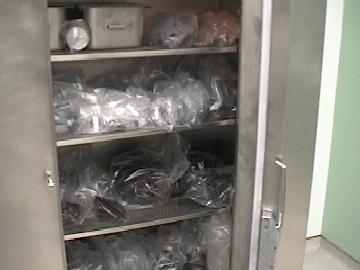
Storage unit for Antarctic meteorites.
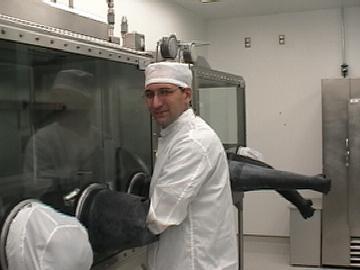
Mr. C reaching in to chamber in which Antarctic meteorites are handled.
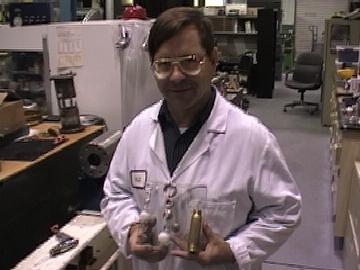
Projectiles used in studying shock features in different rocks.

High pressure gun for making shock features in rocks.

Mr. C and astronaut Cady Coleman at the CapCom station at Mission Control.
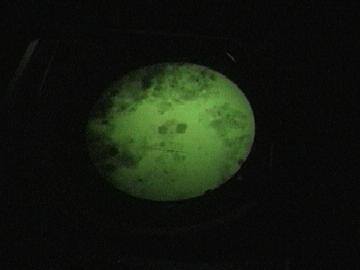
Magnetite crystals in ALH84001 as seen through a SEM microscope.
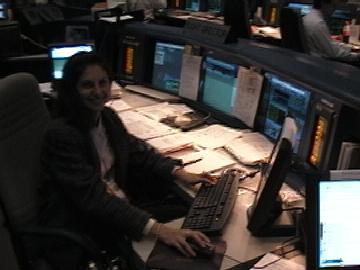
The flight director for STS-112.
Contact the TEA in the field at
.
If you cannot connect through your browser, copy the
TEA's e-mail address in the "To:" line of
your favorite e-mail package.
|
